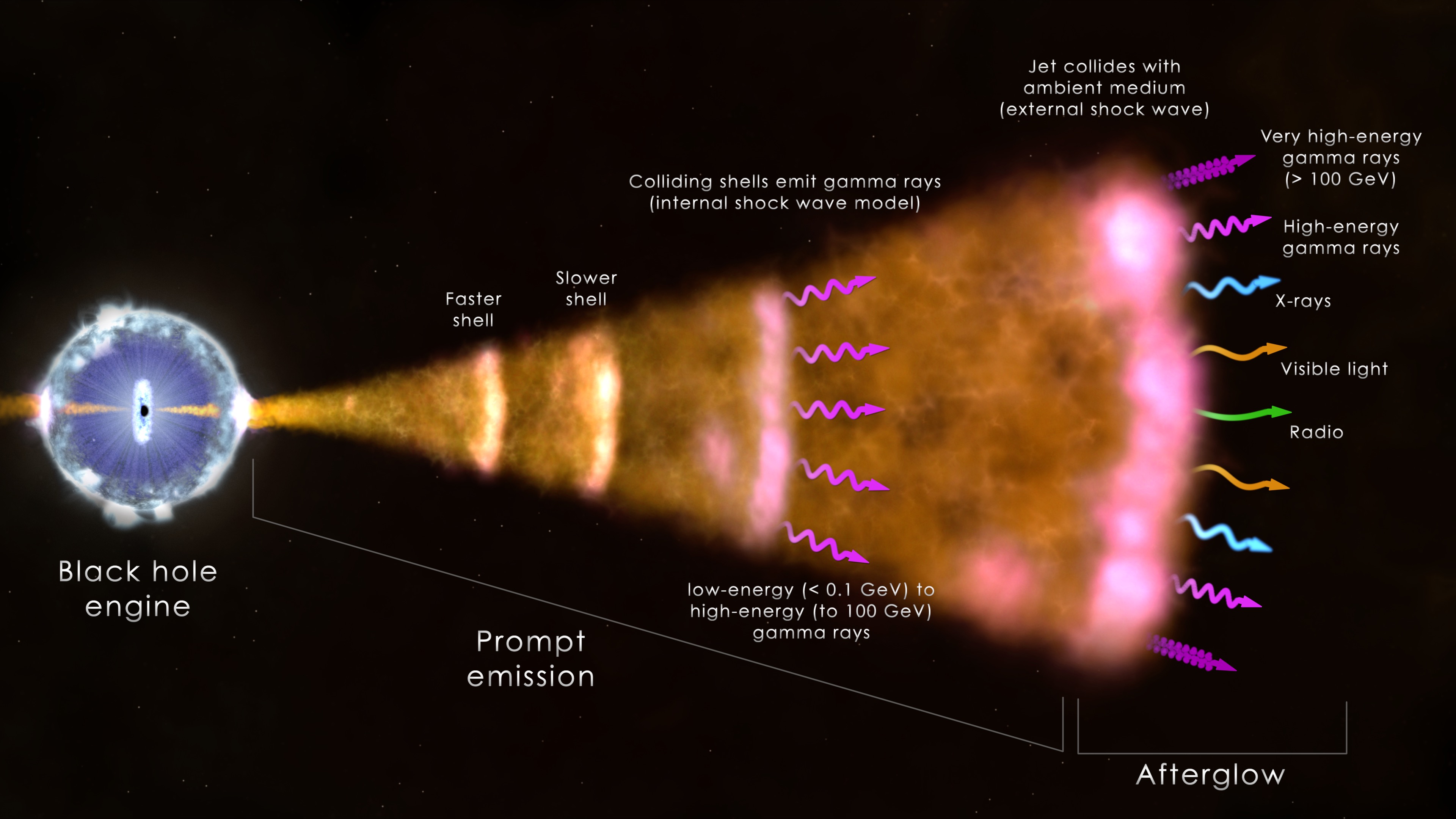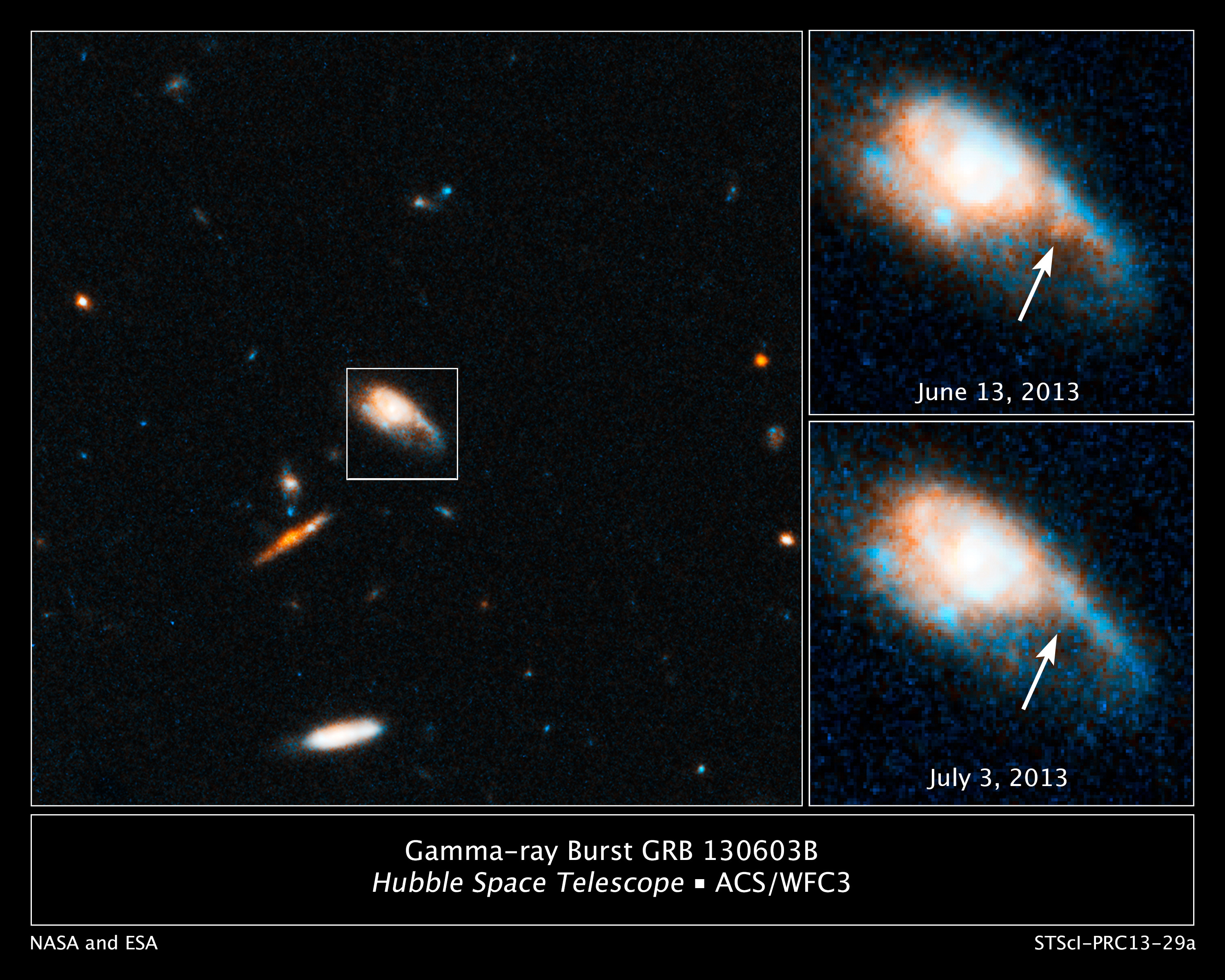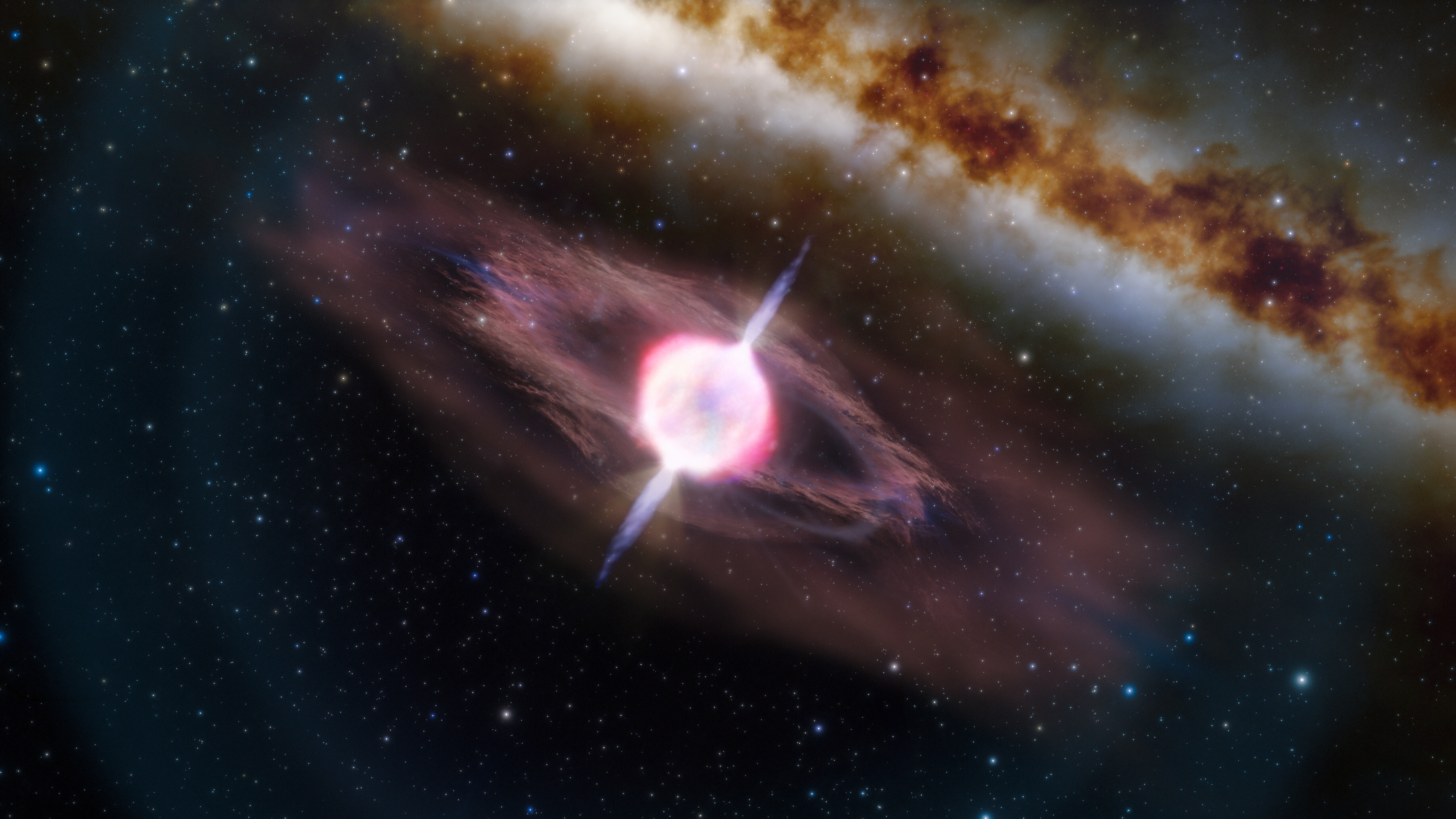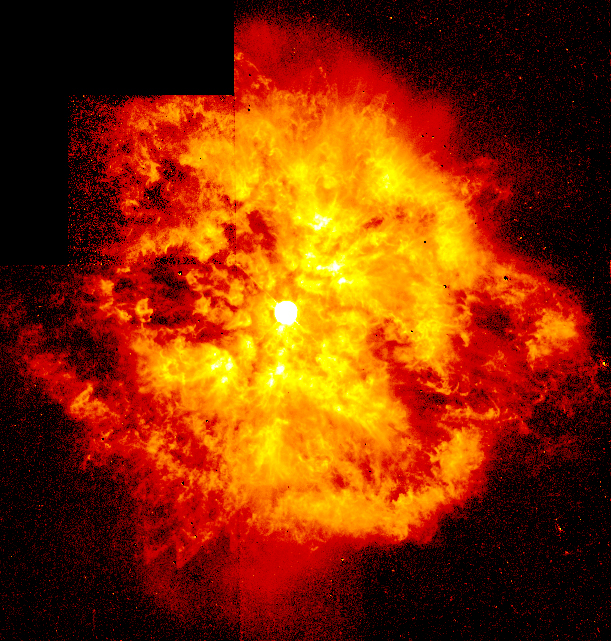Gamma ray bursts
Enlarge text Shrink textIn gamma-ray astronomy, gamma-ray bursts (GRBs) are immensely energetic events occurring in distant galaxies which represent the brightest and "most powerful class of explosion in the universe." These extreme electromagnetic emissions are second only to the Big Bang as the most energetic and luminous phenomenon ever known. Gamma-ray bursts can last from a few milliseconds to several hours. After the initial flash of gamma rays, a longer-lived § afterglow is emitted, usually in the longer wavelengths of X-ray, ultraviolet, optical, infrared, microwave or radio frequencies. The intense radiation of most observed GRBs is thought to be released during a supernova or superluminous supernova as a high-mass star implodes to form a neutron star or a black hole. From gravitational wave observations, short-duration (sGRB) events describe a subclass of GRB signals that are now known to originate from the cataclysmic merger of binary neutron stars. The sources of most GRB are billions of light years away from Earth, implying that the explosions are both extremely energetic (a typical burst releases as much energy in a few seconds as the Sun will in its entire 10-billion-year lifetime) and extremely rare (a few per galaxy per million years). All GRBs in recorded history have originated from outside the Milky Way galaxy, although a related class of phenomena, soft gamma repeaters, are associated with magnetars within our galaxy. This may be self-evident, since a gamma-ray burst in the Milky Way pointed directly at Earth would likely sterilize the planet or effect a mass extinction. The Late Ordovician mass extinction has been hypothesised by some researchers to have occurred as a result of such a gamma-ray burst. GRB signals were first detected in 1967 by the Vela satellites, which were designed to detect covert nuclear weapons tests; after an "exhaustive" period of analysis,: 979 this was published as academic research in 1973. Following their discovery, hundreds of theoretical models were proposed to explain these bursts, such as collisions between comets and neutron stars. Little information was available to verify these models until the 1997 detection of the first X-ray and optical afterglows and direct measurement of their redshifts using optical spectroscopy, and thus their distances and energy outputs. These discoveries—and subsequent studies of the galaxies and supernovae associated with the bursts—clarified the distance and luminosity of GRBs, definitively placing them in distant galaxies.
Read more on Wikipedia >
 Topic
Topic



















